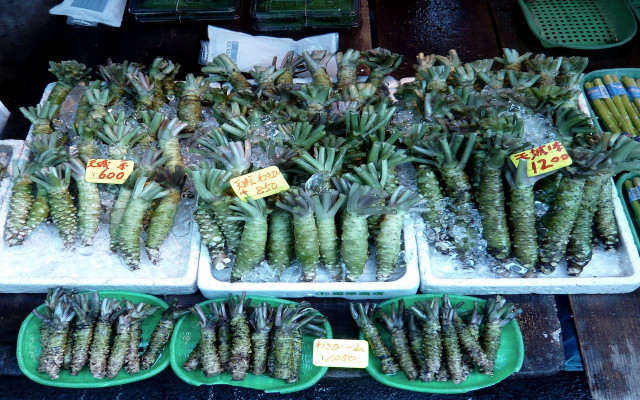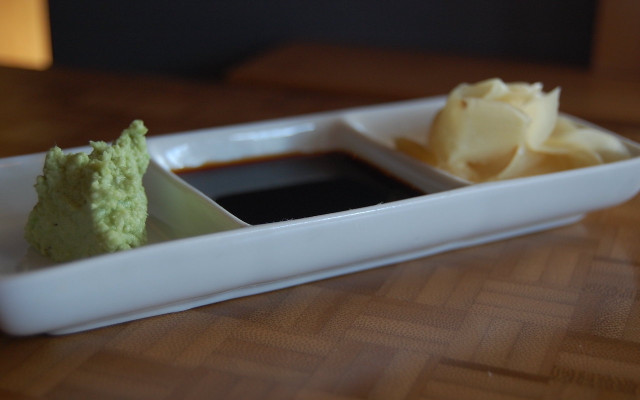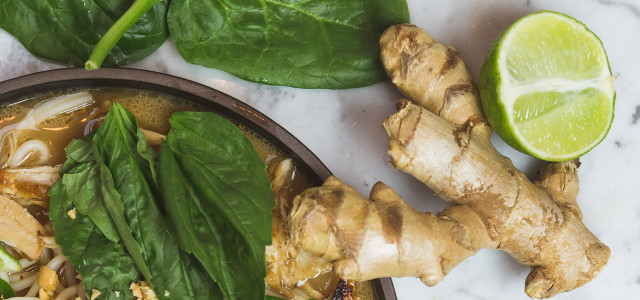Growing wasabi plants can be a difficult yet rewarding undertaking. If you’re successful, you can even make your own paste. We’ll explain how to grow wasabi and what you need to remember.
The wasabi plant is part of the Brassicaceae family, which also includes cabbage, mustard, and horseradish. Wasabi is also known as “Japanese horseradish” due to its pungent flavor. Most people know wasabi as the green paste that comes alongside sushi, but that’s only one way to enjoy this plant. You can add the leaves and flowers to salads or pickle the stems.
In Japan (their country of origin), wasabi plants grow in humid, temperate environments at temperatures between 45 to 70 degrees. These specific conditions exist only in the Pacific Northwest, so growing wasabi outdoors isn’t an easy feat in the USA. However, you can plant wasabi in a pot and overwinter it indoors.
4 Tips for Growing Wasabi at Home
- If you want to plant wasabi, you can choose between seeds and seedlings. Due to the specific conditions involved in growing wasabi, it’s better to use young plants. If you want to try growing from seeds, sow them in the spring.
- Unless you have the ideal growing conditions, wasabi should be planted in pots for best results. Although they prefer cooler temperatures, they aren’t frost-hardy and won’t survive winter or fluctuating temperatures.
- Choose large pots with saucers for the young plants, and fill them with the right soil. It’s important that the soil be rich in humus and nutrients – loam soil works well. From a sustainability perspective, it’s best to use peat-free soil. Peat extraction destroys bogs, which are a very important ecosystem and home to many species.
- After you’ve planted your seedlings in the pots, place them in a cool, semi-shaded location without direct sunlight. The temperature should be around 59 to 68 degrees and as stable as possible.
Caring for Wasabi Plants

- Keep the soil in the containers evenly moist after planting your wasabi, making sure the roots aren’t permanently submerged in water. Adding a layer of mulch to the top can help retain moisture.
- In winter, you should bring the wasabi plants indoors and store them in a cool, dark room. Temperatures just above zero degrees celsius or 32 degrees Fahrenheit are ideal – but they should not drop below freezing.
- Apart from regular watering and the right temperature, there is little you need to do after planting wasabi. Be patient – the young plants grow very slowly. Also, check the plants from time to time for pests. Wasabi plants are susceptible to slugs and aphids. Learn more here: How to Get Rid of Aphids: Helpful Home Remedies
Harvesting and Propagating Tips
Once you’ve planted your wasabi perennial and it’s established and thriving, you can harvest wasabi leaves year-round. Wasabi perennials grow between 8 and 24 inches tall.
Keep in mind that it can take up to 24 months for wasabi roots to be ready for harvest. Once they reach about 6 inches, you can carefully remove the rhizome, or rootstock, from the pot with the rootball and wash it thoroughly.
If you don’t plan on using the root immediately, you can put it in a jar, cover it with water and store it in the refrigerator. It will stay there for up to four weeks.
Because they grow so slowly, it makes sense to grow several wasabi plants. You can easily propagate wasabi by cutting the root in half. Then plant the two halves of the wasabi root in two separate pots and care for them as described above.
Putting Your Wasabi Plant to Use: Wasabi Paste Recipe



Ingredients
- 2 oz. wasabi root
- 1 tablespoon rice vinegar
- 1 pinch salt
Instructions
- Wash and peel your home-grown wasabi root.
- Grate the root with a box grater, using the side with spiky edges. Alternatively, you can puree the wasabi in a blender.
- Blend the grated wasabi with rice vinegar and salt to form a paste.
Do you like this post?







